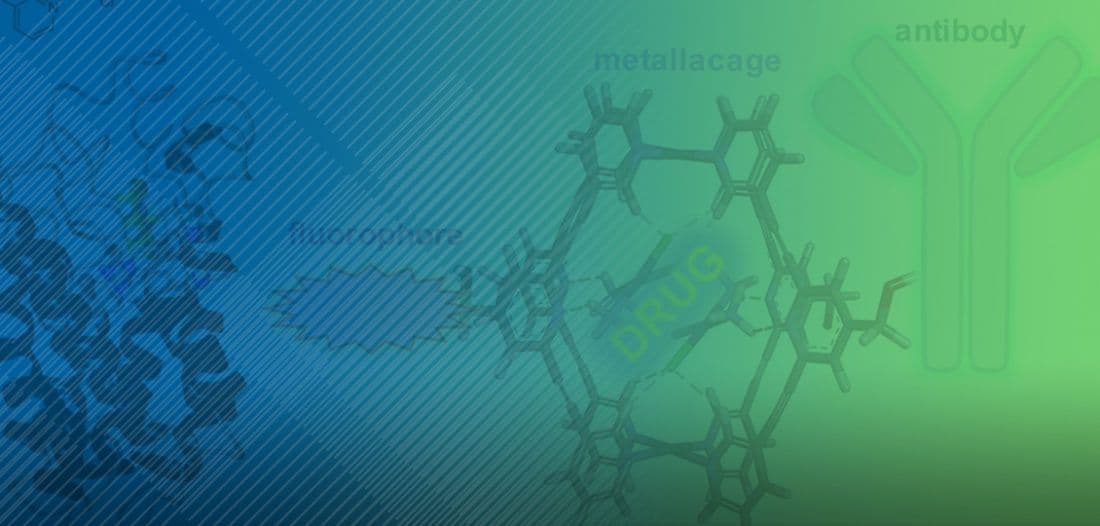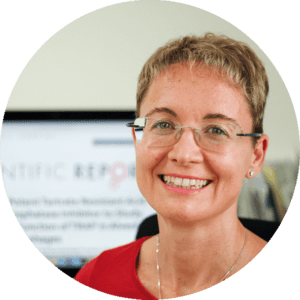Professor Angela Casini, the Chair of Medicinal and Bioinorganic Chemistry at Cardiff University, is the recipient of the 2019 Inorganic Chemistry Lectureship award. Inorganic Chemistry and the ACS Division of Inorganic Chemistry cosponsor the award, which was launched in 2013 to annually recognize an individual who has demonstrated creativity and impact in leading research in […]


Professor Angela Casini, the Chair of Medicinal and Bioinorganic Chemistry at Cardiff University, is the recipient of the 2019 Inorganic Chemistry Lectureship award. Inorganic Chemistry and the ACS Division of Inorganic Chemistry cosponsor the award, which was launched in 2013 to annually recognize an individual who has demonstrated creativity and impact in leading research in inorganic chemistry.
“Angela’s research has had a tremendous impact in the field of metals in medicine, a central area where inorganic chemistry interfaces with biology,” says William (Bill) Tolman, Editor-in-Chief of Inorganic Chemistry. “Her work is highly important and multidisciplinary, with influences spanning biochemistry, biology, and inorganic chemistry. I look forward to her lecture at the symposium to be held in her honor at the National ACS Meeting in San Diego in August!”
As the recipient of the 2019 Inorganic Chemistry Lectureship award, Casini will receive an honorarium, an award plaque, and a travel sponsorship to attend the ACS Fall Meeting in San Diego.
Casini follows in the footsteps of six previous Lectureship recipients:
- 2018 – Lee Cronin, University of Glasgow
- 2017 – Jonas C. Peters, Caltech
- 2016 – Serena DeBeer, Max Planck Institute for Chemical Energy Conversion
- 2015 – Daniel Gamelin, University of Washington
- 2014 – Jeffrey Long, University of California, Berkeley
- 2013 – Christopher Cummins, Massachusetts Institute of Technology
An Interview with Angela Casini
I caught up with Casini recently to learn more about her research and what she will be doing next. Here are the highlights of our conversation.
What does it mean to you to be awarded the 2019 Inorganic Chemistry Lectureship?
“It is one of the most prestigious and renowned awards in the inorganic chemistry community worldwide. I am extremely honored by being among the recipients, and as a European scientist, this recognition of my research activities also reflects their international impact.”
What prompted you to study the field of inorganic chemistry and why did you choose to pursue bioinorganic research in particular?
“At the beginning of my undergraduate studies, I was more attracted by the study of organic chemistry. Instead, during the years, I became fascinated by the connection between inorganic chemistry and biological systems, and particularly by the possibility of translating and adapting the knowledge we had on small metal-based compounds, to more complex metal-containing biomolecules, to understand their reactivity and function. I also found the diversity of metal ions and their unique reactivity capable of making them powerful tools of nature during the development of life.”
Tell us a little about how you do this chemistry, and some of the important applications you are working on that will benefit society?
“I read a lot. I like reading papers from different areas and my ideas come out when I finally manage to connect studies that initially appear, at first glance, as not related. From that point, I can produce new results and knowledge.
I always prefer to work on fundamental problems in chemistry. However, among the projects that hold more promise to have an impact on society, a recent one in my group aims at developing novel supramolecular drug delivery systems for anticancer drugs. The drug discovery process needs new materials for targeted drug delivery, different from those which have been mostly experimented up to now (e.g. liposomes, polymers, nanoparticles) and that are not yet ideal. In this context, supramolecular coordination complexes are endowed with peculiar properties and offer an important alternative to the design of novel drug delivery vehicles.”
Tell us about your research philosophy.
“Reading previous literature is fundamental as well as having a moment to look at my research area from some distance, in perspective, to observe its interface with other fields and disciplines. In this way, I see its potential but also its limits. And the idea is to go beyond such limits, to redefine the boundaries, and challenge the paradigms set by others. This is what moves me.”
What are you working on now? What’s next in your research?
“One topic I feel particularly attached to these days is the study of the mechanism of water transport in biological systems, across biomembranes, via specific proteins called Aquaporins (AQPs). If you think of the importance of the regulation of homeostasis in every cell, AQPs must have always played a pivotal role in the compartmentalization of living systems, at the origin of life. Every living organism features an AQP in its membrane. We were the first group to report on the selective inhibition of AQPs by gold compounds and to use them as chemical probes to understand AQP function in the mechanisms of diseases, including cancer.
In the near future, I want to design gold compounds for catalysis in an aqueous environment using biomolecules as substrates. Most importantly, I want to continue writing about science.”
Is there anything else that you would like to share?
“Overall, the final ambitious goal of this research, in a broader sense, is to define new trends in the Periodic Table aimed at rationalizing the behavior of metal-based compounds in complex living systems. For this purpose, I need the help of the inorganic chemistry community, which inspires me and constantly provides me with new knowledge.
Finally, I would like to add that I am particularly grateful to my group members (we are a small group of a few postdocs, Ph.D.s and Master students) for the great work that they conducted in these last years, and for the enthusiasm they put into everything they experimented.”
A Selection of Angela Casini’s ACS Publications Articles
Get an idea of Casini’s research in this selection of articles she has published in Inorganic Chemistry and other ACS Publications journals:
Insights into the Mechanisms of Aquaporin-3 Inhibition by Gold(III) Complexes: the Importance of Non-Coordinative Adduct Formation
Inorg. Chem., 2019, 58 (3), pp 2140–2148
DOI: 10.1021/acs.inorgchem.8b03233
Bioconjugation of Supramolecular Metallacages to Integrin Ligands for Targeted Delivery of Cisplatin
Bioconjugate Chem., 2018, 29 (11), pp 3856–3865
DOI: 10.1021/acs.bioconjchem.8b00682
Mass Spectrometry Uncovers Molecular Reactivities of Coordination and Organometallic Gold(III) Drug Candidates in Competitive Experiments That Correlate with Their Biological Effects
Inorg. Chem., 2016, 55 (9), pp 4248–4259
DOI: 10.1021/acs.inorgchem.5b03000
The Promise of Self-Assembled 3D Supramolecular Coordination Complexes for Biomedical Applications
Inorg. Chem., 2017, 56 (24), pp 14715–14729
DOI: 10.1021/acs.inorgchem.7b02599
